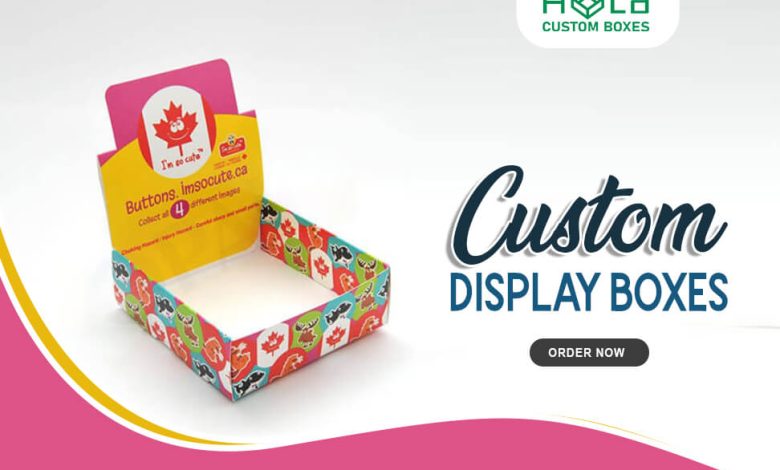How Typography Can Enhance Your Custom Packaging?

Magnify your brand’s appeal with typography in custom packaging, influencing consumer perceptions and emotions.
Typography in custom packaging plays an important role in engaging consumers. The font style chosen reflects your brand identity and evokes emotions tied to your products. Text alignment impacts visual appeal and readability, guiding customers through product details. Proper spacing enhances legibility and directs focus to key elements. Utilizing color psychology influences how your brand is perceived and triggers emotional responses. By carefully pairing fonts and establishing a hierarchy, you can create a cohesive and attractive packaging design. The strategic use of typography can enhance your brand’s image and greatly impact consumer engagement.
Main Points
- Font style reflects brand identity and evokes emotions.
- Text alignment enhances visual appeal and readability.
- Proper spacing creates balance and directs attention.
- Color psychology influences consumer perception and emotions.
- Font pairing techniques enhance contrast and harmony in design.
Importance of Font Style On Custom Packaging Boxes
When considering the design of custom packaging, the font style chosen plays an essential role in conveying the brand’s identity and message effectively. The font style used on custom packaging serves as a visual representation of the brand’s personality and values. Different font styles evoke distinct emotions and perceptions in consumers. For example, a sleek and modern font may convey a sense of sophistication and innovation, while a playful and whimsical font can create a lighthearted and friendly vibe. It is important for brands to select a font style that aligns with their overall brand image and resonates with their target audience.
The font style used on custom packaging can also contribute to brand recognition and recall. Consistent use of a specific font style across all packaging materials helps reinforce brand identity and makes the brand more memorable to consumers. The readability of the font style chosen is paramount, as it directly impacts the effectiveness of the message being communicated. Overall, selecting the right font style for custom packaging is a strategic decision that can greatly influence how consumers perceive and engage with a brand.
Impact of Text Alignment On Custom Boxes
Text alignment in custom packaging design greatly impacts the visual appeal and readability of product information. Proper text alignment enhances the overall aesthetics of the packaging, making it more visually appealing to consumers. When text is aligned correctly, whether it is left-aligned, right-aligned, centered, or justified, it creates a sense of order and professionalism in the design.
Text alignment plays an important role in improving the readability of the information presented on the packaging. For instance, left-aligned text is commonly used for product descriptions and instructions as it creates a clean and organized look, making it easier for customers to read and comprehend the content. On the other hand, centered alignment is often used for highlighting important details or adding a touch of elegance to the packaging design.
Role of Spacing in Design
Spacing in design plays a crucial role that greatly influences the overall visual appeal and user experience of custom packaging. The way text and images are spaced within the design can have a profound impact on how the packaging is perceived by consumers. Proper spacing not only enhances readability but also creates a sense of balance and harmony in the overall composition.
One of the key roles of spacing in design is to improve the legibility of the text. Adequate spacing between letters, words, and lines can make the text easier to read, especially from a distance. Insufficient spacing can cause letters to blend together, making it difficult for customers to decipher the information presented on the packaging.
Furthermore, spacing also helps in directing the viewer’s attention to specific elements on the packaging. By strategically adjusting the spacing around certain design elements, such as product names or key messages, designers can emphasize their importance and create a more visually appealing hierarchy. Overall, the role of spacing in design cannot be overstated in creating attractive and effective custom packaging.
Color Psychology in Typography
Effective use of color in typography can greatly impact consumer perception and engagement with custom packaging design. Color psychology plays a significant role in how individuals perceive and interact with a product. Different colors evoke varying emotions and associations, making it imperative to select colors that align with the brand message and target audience.
For example, warm colors like red and orange can convey energy and excitement, while cool colors such as blue and green may evoke feelings of calmness and trust.
When choosing colors for typography in custom packaging, it is essential to take into account cultural differences and the meanings associated with specific colors in different regions. Understanding the psychological implications of colors can help designers create packaging that resonates with consumers on a subconscious level, ultimately influencing their purchasing decisions.
Font Pairing Techniques
How can designers effectively combine different fonts to create visually appealing and harmonious custom packaging designs? Font pairing is an essential aspect of typography that can either enhance or detract from the overall aesthetic of the packaging. When selecting fonts for custom packaging, designers should aim to create a balance between contrast and harmony.
One effective technique for font pairing is to combine a serif font with a sans-serif font. This creates a visually interesting contrast between the traditional elegance of serif fonts and the modern simplicity of sans-serif fonts. Another approach is to pair fonts with different weights and styles, such as a bold headline font with a lighter, more delicate body font. This contrast in weight and style helps create hierarchy and visual interest in the design.
Furthermore, designers should pay attention to the overall mood and message they want to convey through the packaging. Different fonts evoke different emotions, so selecting fonts that align with the brand’s identity and the product being packaged is essential. By carefully considering these factors, designers can create custom packaging designs that are not only visually appealing but also effectively communicate the brand’s message to consumers.
Typography Hierarchy Tips
When considering typography hierarchy for custom packaging designs, designers must strategically prioritize fonts to guide viewers through the information hierarchy effectively. Typography hierarchy plays an important role in communicating the message of the brand and highlighting essential information.
Here are three tips to help designers create an effective typography hierarchy in custom packaging:
- Use Font Sizes Wisely: Utilize different font sizes to establish a clear visual hierarchy. Larger fonts can be used for prominent information like the brand name or key messages, while smaller fonts can be reserved for secondary details.
- Utilize Font Styles: Experiment with different font styles such as bold, italic, or underline to emphasize important information. Consistent use of font styles can help create a cohesive and structured design.
- Spacing and Alignment: Pay attention to spacing and alignment to make sure that the text is easy to read and visually appealing. Proper spacing between lines and paragraphs, as well as alignment of text elements, can enhance the overall typography hierarchy in custom packaging designs.
Call to Action Optimization
To enhance the effectiveness of custom packaging designs, optimizing the call to action is essential for prompting desired consumer responses. A compelling call to action serves as a guiding force that directs customers on what steps to take next. In the realm of custom packaging, the call to action should be clear, concise, and strategically placed to maximize impact. It should stand out from the rest of the text, using typography elements such as size, color, and font style to draw attention. Verbs like ‘Buy Now,’ ‘Shop Today,’ or ‘Discover More’ can evoke a sense of urgency and encourage immediate action.
The placement of the call to action within the overall design is pivotal. It should be strategically positioned where it is easily noticeable and accessible to the consumer. Whether it’s on the front of the packaging, the side panel, or even the bottom, the call to action should be seamlessly integrated into the design without overpowering other essential information. By optimizing the call to action in custom packaging, brands can effectively guide consumers towards making a purchase or taking the desired action.
Creating Visual Hierarchy On Custom Packaging Designs
Establishing a clear visual hierarchy within custom packaging designs is essential for guiding consumer attention and conveying key information effectively. By strategically organizing the elements on your packaging, you can create a visual structure that helps consumers navigate the information presented.
Here are three key aspects to take into account when creating visual hierarchy in custom packaging:
- Typography: The use of different font sizes, styles, and colors can help prioritize information on the packaging. Important details such as the brand name or product name can be highlighted using larger or bolder fonts to draw attention.
- Color Contrast: Utilizing contrasting colors for different elements can help create a visual distinction and guide the eyes to essential information. A high color contrast between the background and text can improve readability and make important details stand out.
- Whitespace: Incorporating ample whitespace around key elements can help create breathing room and enhance readability. Whitespace can also assist in separating different pieces of information and guiding the consumer’s focus to essential details.
Brand Consistency in Packaging
Consistency in packaging design is essential for reinforcing brand identity and establishing consumer recognition. Regarding brand consistency in packaging, every element from colors to logos and typography plays an important role. By maintaining a cohesive look across all packaging materials, brands can create a strong visual presence that consumers will easily associate with their products.
One key aspect of brand consistency in packaging is using the same typography throughout all packaging materials. This includes employing consistent fonts, font sizes, and text styles to create a unified look that reflects the brand’s personality and values. Whether it’s a bold and modern typeface or a more traditional and elegant font, choosing the right typography can help reinforce brand messaging and make the packaging more visually appealing.
Furthermore, consistent use of colors that align with the brand’s color palette is also crucial for brand recognition. Colors evoke emotions and associations, so maintaining consistency in color schemes across different packaging designs can help create a strong brand image and enhance brand recall among consumers. By paying attention to these details and ensuring brand consistency in packaging, companies can establish a memorable brand identity that resonates with their target audience.









